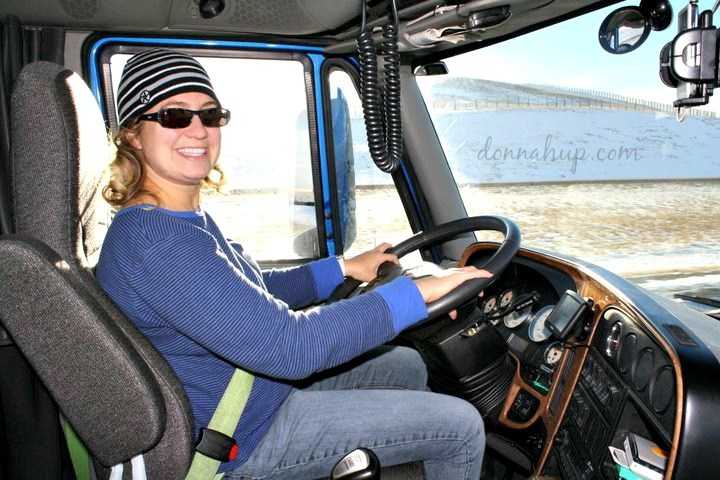When Considering the US Employment, women make up 47% of the entire workforce. Astonishingly, when it comes to women in trucking the numbers seem to be minuscule in comparison. Recent trends show that the historic gender norms in trucking are fading fast, as the expansion of e-Commerce and distribution has created a boom in the labor market. With record-low unemployment, employers are having to look outside of their traditional labor pools for every role in the supply chain, especially for drivers, hence turning to women.
The number of female truckers increased by 68% since 2010 to 234,234 in 2018. Though, women still account for just 6.6% of the trucking workforce according to the American Trucking Associations. The driver shortage is one of the biggest issues facing the entire trucking industry. Transportation is a key part of the supply chain and without professional drivers, it becomes increasingly more difficult to get a product from point A to point B. One of the main reason women are moving towards the trucking industry is equal pay. Another factor is a shift in technology within the industry as new technology and equipment make truck driving a job that is more geared toward women. Things like automatic transmissions make it easier for anyone to be able to drive a semi-truck.
Getting Started
As for any truck driver; it is mandatory for a woman, who wants to drive a semi-truck, to obtain a CDL. This can usually be done in CDL schools in close proximity to home. In this process of obtaining a CDL, a high school diploma or a GED is mandatory. For traveling within the driver’s home state, the age requirement is 18. But, if the driver wants to be able to drive across the country, there is a minimum of 21 years of age. A driver must also have a pretty good record, both medical and a non-criminal record. Considering all stakeholder interests, the driver should have excellent vision and hearing, hand-eye coordination, and be in top physical health. The federal regulations will not allow for the hiring of people with any type of medical problems, such as heart problems, epilepsy, or any other condition that would interfere with driving abilities. In other words, the driver must be able to hear a whisper from 5-feet away, whether by wearing a hearing aid or not, and must have at least 20/40 vision with a 70-degree field of vision in each eye. As a result, most schools will require their students to get a physical exam before entering a class.
A sign of positivity is that with the interest garnered as of recent times, with the trucking industry-changing, great news come for the ladies. Women in trucking are starting to be better represented. Based on recent data of over 500,000 truckers and trucking students, 22% of people looking for a CDL school are women. In addition to this, it is reported that CDL trucking job boards show that 17% of all people looking for trucking jobs are women.
It’s not only young women who are looking to start a CDL career. Based on the information collected and compiled via various sources, it can be noticed that women of varying ages are looking to become truck drivers. There are women searching for trucking schools as well as women truckers looking for jobs whose ages range from their early 20s into their 60s. Also, a surprising find is that there is not a wide age gap between the women with CDLs looking for trucking jobs compared to those looking to start a career in trucking. Women, no matter what your age is, if you can drive and deliver efficiently, nothing is stopping you from having a successful career in the trucking industry.
However, one has to consider the following hard facts, which we believe is best to be known early in the process. In general, truck drivers roughly spend around 300 days per year on the road, and it shouldn’t be a surprise when women truck drivers will also be looking at similar ordeals. This means that truck drivers will only get 65 days to spend at home. It also could take up to two years before becoming a regional driver where they are able to be home every week. Even though, the alternate truth being is that the more time is spent on the road, the more money is to be earned.
As not all jobs usually are a best fit for everyone, we do recommend to do a self-evaluation to determine whether or not one’s personality is a good fit for the job. A myriad of requirements and challenges will come across at the helm of the job, where one will have to display patience, determination, independence, and most importantly have a good work ethic, good judgment, and intuition. You need to embrace this challenging voyage so if your personality traits suggest otherwise, trucking wouldn’t be a good fit for you. However, if you are someone ready for the challenge, truck driving allows the driver to see parts of the US, Canada, and even Mexico that are left unchartered even by the most travelled tourists. It’s no wonder that some truck drivers also become ‘professional tourists’, particularly the young ones who are not married with children. As you would find out on the job, trucking is such a lifestyle, the cabins of trucks come with features to keep you, the truck driver, connected, such as smartphones, tablets, and video chat to keep in contact with family and friends. It is common knowledge in the trucking world, that all truck stops are not created equal. Some are nicer than others, but definitely keep a pair of shower shoes packed, just in case. Truckers who have been on the road for a long time know which stops to go to and which ones to avoid. It’s a learning curve and a rite of passage for many truckers who are just starting out, especially for women truckers, who we would presume are more hygiene conscious.
There is so much sitting involved with driving it can cause staying healthy to become difficult. Boredom can cause you to eat your way through your drive. Stockpiling unhealthy snacks is not uncommon for truckers, but it doesn’t have to be that way. Drivers can find creative ways to stay fit and healthy while doing their job.
While the new trucks are luxurious and well-appointed, truck driving can be a very lonely lifestyle. Sure, there is a connection with the other drivers, but it can get tiresome being away from home for extended periods of time.
There is a 125,000 mile per year expectation to put on truck drivers. This is roughly 500 miles a day, every working day, per year.
Driving a truck is not a 9-5 job. Some choose to get an early morning start while others like to drive through the night. The hours are up to you, as long as you get to your destination on time while following the federal regulations.
Women are more likely to adhere to rules than men and better conduct on the road, they pay heed to the warnings while driving like "excessive Overspeed," "forward collision warning," "hard breaking," and other signals that can prevent one from an accident and ensure safe driving. This has been backed by statistics by a recent crash data study which states that for every 100 female drivers, they get into 3.41 preventable accidents, compared to a rate of 3.44 accidents among every 100 male drivers.
In regard to all the arduous tasks that come with the job requirement, heavy lifting and macho efforts maneuvering these big rigs are no longer a roadblock for women in trucking. Women drivers say technological advancements in our industry where trucks with better visibility, more modern transmissions and additional driver assistance technology continue to ease the effort required on the job. In addition to this, a driver is no longer responsible for loading and unloading trucks which also has made the profession more accessible.
Gender Pay Gap, Compatibility and Influx
While women are still experiencing a pay gap in most professions, it turns out that trucking isn’t one of those. According to the Women in Trucking Association (WIT) there is no gender pay gap for truckers. A famous saying that is doing the rounds is that “the steering wheel knows no gender”.
Even though, there are many different types of driver pay in the industry which includes pay by the mile, per load, hourly, and even salary in some cases. However, in all cases, there is no distinction between male or female. In addition to this is that fleet owners and carriers vary pay grades by which drivers are paid, only via experience level, routes, delivery record, but not gender-specific.
This, in turn, has encouraged more women to enter this field. As we know, currently trucking is overwhelmingly a male profession with women making up only about 7% of the driver population and about 14% of management, these are gaining traction for change in the future.
Women find challenges exciting, like to prove themselves, and are apt to even ask for more challenging tasks personally.
This has been validated via a recent knowledge share which states that in the following ways female drivers tend to outperform their male counterparts:
- Lower accident ratio – Women are more cautious when they are behind the wheel. This means less trucking accidents occur, and if they do, they are usually at slower speeds. Safer transport and better risk ratios in comparison, with valuable cargo on the line an additional premium or higher wage to ensure better and safer deliveries should be a no brainer.
- Longer tenure (notable in an industry that suffers a 96% turnover rate) – Higher turnover rates in the industry suggest no loyalty amongst drivers, and additional recruitment costs, especially with the driver shortage plaguing the industry longer tenures would be immense for both carriers and fleet owners.
- When it comes to paying attention to detail, women do a great job. As the paperwork that comes with the job is important, as much as truck driving. Truckers have to manage bill of ladings and fill out truck logbooks, which document mileage and time spent driving. They need to manage time, watch routes, and update dispatch—all things that take awareness and focus.
- Travels more overall miles per year (Average miles by women 52,682 vs men 50,344)
Sexual Harassment in Trucking
Every woman should feel safe, regardless of her career choice, and currently, this isn't always the case. Even though, more women are entering the trucking industry, they continue to remain a small minority in this male dominant landscape. As a result, they still experience discrimination, or worse, increased threats to their personal safety while on the job. A recent poll from Women in Trucking found only 4.4 in 10 female truckers feel safe at work. In addition, it was reported that Workplace Violence against Female Long-haul Truckers was a whopping 42 percent of female long-haul truckers that reported experiencing one or more types of workplace violence.
Even though, it is an issue of importance and in spite of the evidence that has been accumulated, the FMCSA continues to not provide materials or training to truckers, including minority and female truckers, on how to protect themselves from being stalked, harassed, assaulted, or robbed.
However, a positive outlook in this space is that a Senator from Kansas is considering legislation that would create an advisory board within the Federal Motor Carrier Safety Administration (FMCSA) focused exclusively on increasing the ranks of women in trucking. Known as the “Promoting Women in Trucking Workforce Act,” being crafted by U.S. Sen. Jerry Moran, which contends that the trucking industry “should explore every opportunity, including driver training and mentorship programs, to encourage and support the pursuit of careers in trucking by women,” according to a draft of the bill.
Like everywhere in society, sexual harassment is rampant in the trucking industry and very little safety rails to protect and provide safer environments for women in the trucking industry. Gradually with a more liberal stance by society should gradually fix this. At least we hope.
However, until then we recommend women to aggressively prepare themselves with whatever means possible.
Women Trucking Organizations –
Below are two of the most prominent women trucking organizations, intended to lead the way in addressing many issues facing women in the trucking industry.
The Women in Trucking Association is a non-profit organization focused on the transportation and logistics industry. The Women in Trucking Association was founded in 2007 to encourage the employment of women in the trucking industry, promote their accomplishments and minimize obstacles faced by women working in the trucking industry. Some of the issues addressed and worked on by the WIT are as follows
- Educate and raise awareness for women’s issues
- Promote career opportunities for women in the industry
- Improve conditions for women already working in the industry
- Increase the number of women in leadership positions in the industry
- Increase the number of women drivers
- Serve as a resource about women working in the industry
The Real Women in Trucking Inc. - was formed in 2010 as a protest group by women truck drivers seeking improved conditions that were not being effectively addressed by the industry or any other organizations. This grassroots driver led movement was granted 501 (c) (6) trade association status in June 2013.
In regard to their work they refer to themselves
- Creating a network of support for women entering trucking
- Creating a reliable resource that promotes transparency
- Mentor qualified women who wish to become commercial drivers and connect them to quality employers and services that will benefit them
- Advocacy for industry improvements benefits drivers of any gender.
Outlook for the future
Barbara Herman, the NTTC Driver of the Year, 2019 has been driving for 34 years, has over 1.7 million accident-free miles and is a beacon of an ambassador for our industry as a whole and especially the women in the industry. With her herculean achievements, she is along with many other women truckers that are challenging the very fabric of this industry. Contrary to a somewhat popular belief, trucking isn’t just a man’s world anymore. Women are equally as capable of operating a colossal vehicle as much as their virile counterparts. Maybe you have heard the saying anything men can do, women can do better? One could only argue, as it’s actually a renowned fact when it comes to trucking: women continue to outperform men in trucking.
There are some legitimate reasons why women are perfectly compatible with sharing the trucking space with men: however, this could lead to an alternative reality in which those women could end up with a higher pay. Especially if we consider the fact there are some positive differences in job performance when compared to men. A novel idea of course, but the additional pay could be for the safety and hassle-free delivery of cargo usually reflected by women truckers.
Since the need for truck drivers in the U.S. is only increasing as the demand for goods grows, with a predicted shortage of 175,000 truck drivers by 2026. In addition, many drivers are expected to retire in the coming years. Hence, women in trucking could be seen as a sustainable solution to this problem faced by the industry.
With the increase in women joining the trucking industry, the supporting industries have taken steps to alleviate any aggravations ladies might face. For example, truck stops are refurbishing up the parking lot lighting to make the area safer for women. The technology in trucks is advancing, and what was once difficult for anyone to use is now not challenging for any gender. Truck manufacturers are designing the trucks to be more adaptable for women drivers—easier access, closer pedals, and better-positioned seat belts.
Conclusion
As we know, Big-Rig driving is listed among the most dangerous occupations in the U.S. by the U.S. Bureau of Labor Statistics. Some 840 truckers died the previous year, it is one of the highest numbers for the category since the Bureau of Labor Statistics started to keep track of it in 2003. With this and many other factors, we could say that for men on the road, life is tough, but for women, it's even harder. For them to be far from family and friends, they are forced to grapple with sexism, sexual harassment, personal safety, hygiene, and an overall trucker lifestyle associated with poor health while trying to turn a space the size of a backyard shed into a rolling home on wheels, sometimes for weeks per outing.
Even though, so much headwind against women in trucking they still continue to amaze everyone as recent data shows women truck drivers are generally safer than men. Experts think it's because they are less likely to take risks. Ensuring safer deliveries and better conduct on the road. Truly a positive outlook.
Another reason why women are inclining more toward trucking is that the job has become somewhat more female-friendly, for various reasons, mostly due to modernization -- including better transmissions on certain kinds of trucks that allow for a less-grueling ride over long distances and the industry often no longer needing truckers to load and unload the cargo they're carrying.
New technology and equipment make truck driving a job that's more geared toward women. A new age is dawning upon us.
Links:
Women In Trucking Association (WIT)
Donna's Webpage: Donnahup.com









